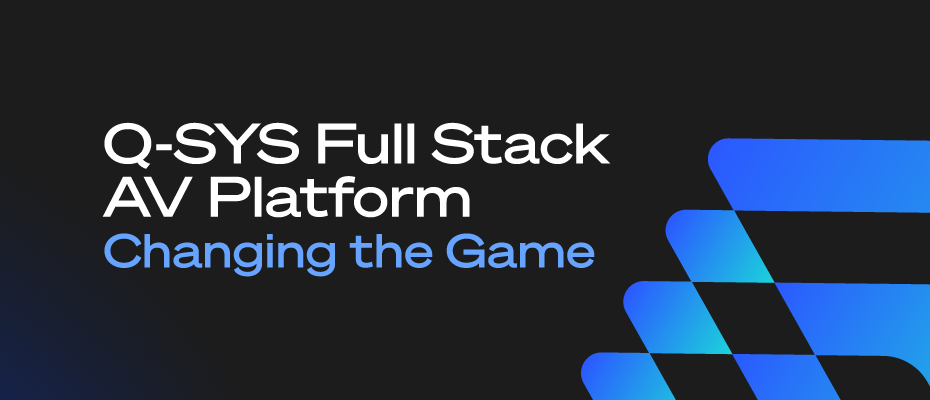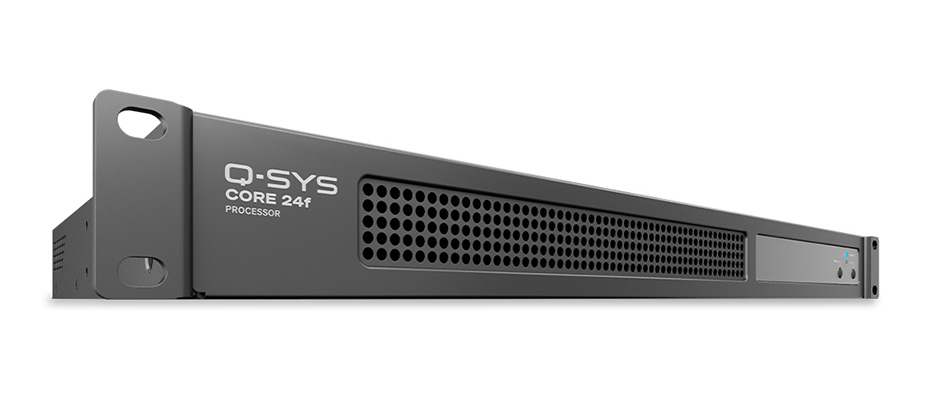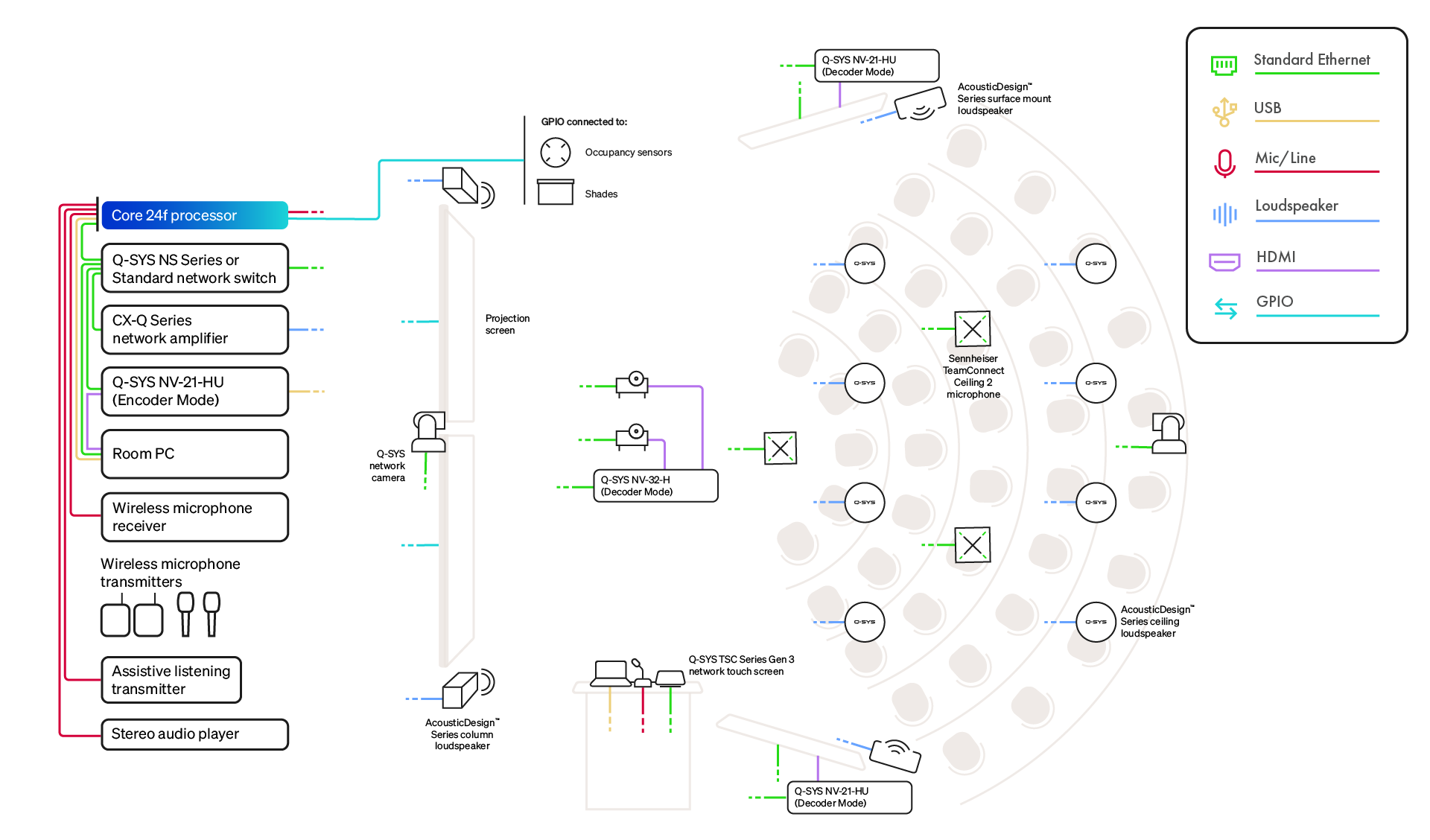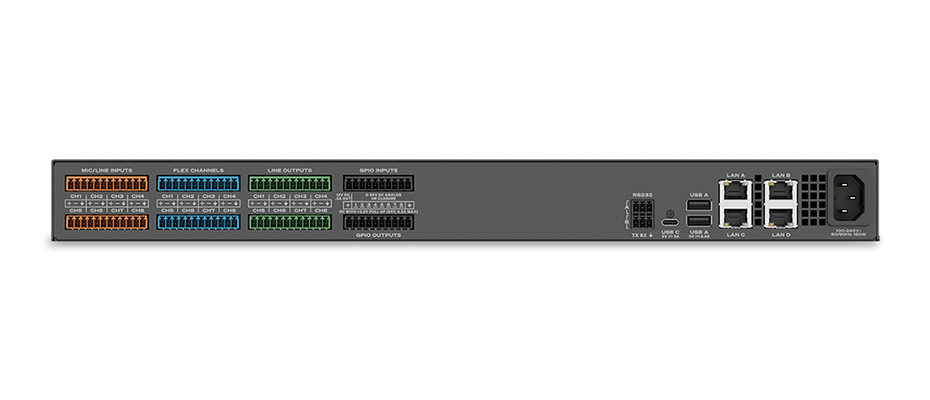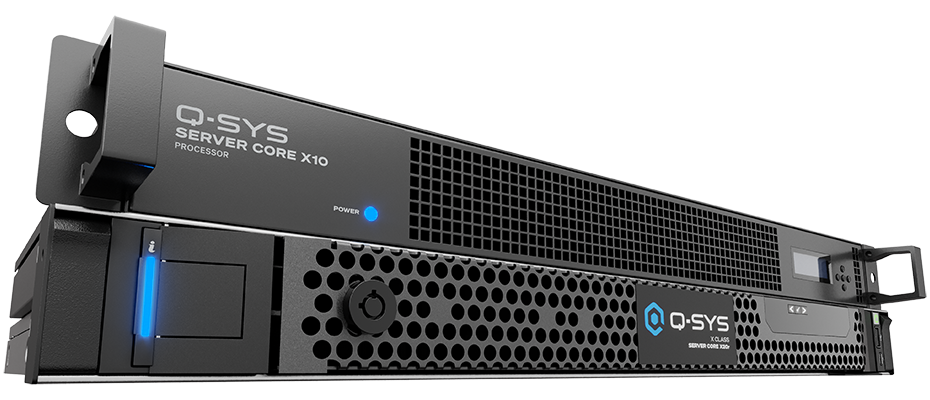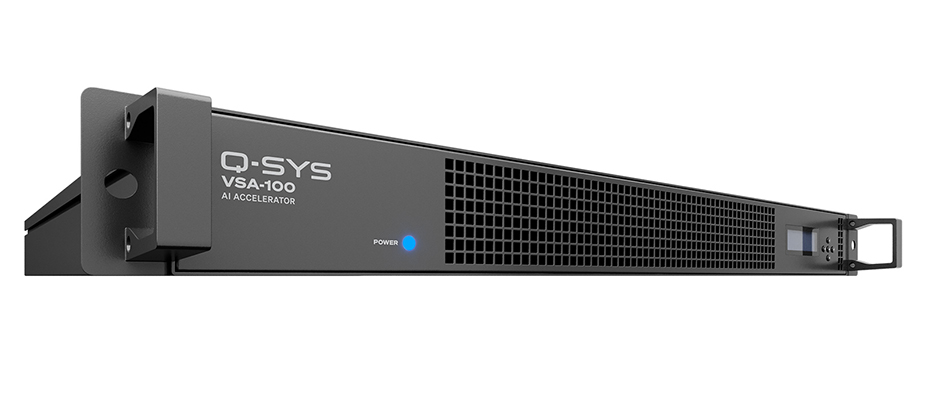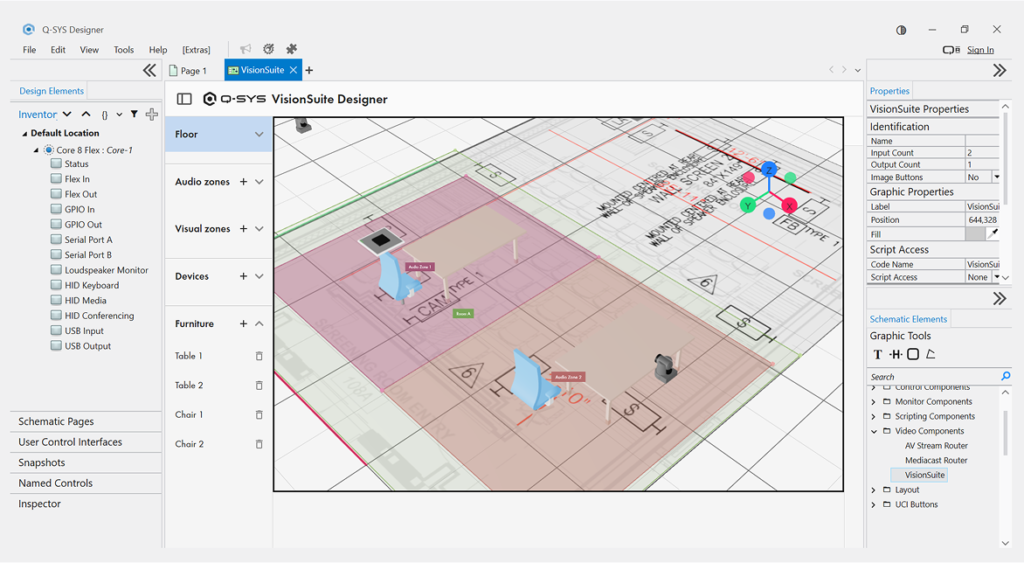In today’s hybrid, hyper-connected world, AV systems must do more than connect—they must adapt, evolve, and drive business outcomes. At Activate 2025, Q-SYS introduced its most expansive platform release yet, redefining what it means to deliver transformative AV experiences at scale.
This isn’t just a launch—it’s the next step in our mission to build the most innovative full stack AV platform, one that unifies data, devices, and a cloud-first architecture to power real-time action and insight across every space.
With powerful new processing options, next-gen automation tools, smarter design workflows, and enhanced data visibility, Q-SYS continues to break down barriers between AV and IT—and deliver more flexible, scalable systems for today’s dynamic spaces.
The Q-SYS Full Stack AV Platform is built on three foundational layers:
- Multimodal I/O – Connecting physical devices to the platform, providing real-world inputs and outputs
- Cognitive Cloud – Enabling system-wide awareness, remote management, and future-ready AI services
- Intelligent Platform OS – Orchestrating the bidirectional flow of data, control, and AV logic in real time
The full stack AV platform helps deliver customer outcomes across many of the verticals we serve. This architectural approach ensures customers can flexibly adapt systems, optimize reliability, and future-proof their technology investments regardless of the complexity or scale of the environment.
Let’s explore how each layer is now more powerful—and more integral—than ever before.
Intelligent Platform OS: Powering the Core of AV Innovation⚙️
The Q-SYS Integrated Platform OS is the singular connective tissue of the platform. This integrated engines applies real-time intelligence to audio, video, and control data, moving it fluidly throughout the system and enabling responsive, orchestrated experiences across spaces. The OS drives every native processor in the portfolio, including those announced at Activate, allowing the programmer to have one learning curve to overcome, and creating the conditions for cohesion for the end users.
Redefining a Standard: The Q-SYS Core 24f
In 2015, Q-SYS introduced the Core 110f, a groundbreaking processor that remains unmatched in its class, delivering fully integrated audio, video, and control in a single device. It was originally designed for collaboration spaces, but its processing capabilities, and convenient onboard I/O allowed it to succeed across a much broader range of applications.
Today, the Q-SYS Core 24f expands on that legacy, offering 2x more DSP processing power with expanded network I/O capacity to handle a greater number of networked audio endpoints. It also features plenty of local I/O with expanded network flexibility and integrated AV bridging via USB-C.
Key features include:
- 24 onboard audio I/O, (8x in, 8x out, 8x software-definable flex channels)
- 160 x 160 network audio I/O
- Integrated AV Bridging via USB-C
- 160 x 160 Dante audio capacity
- 96 peripheral device capacity.
The Core 24f is meant to enable the same applications and room types as its predecessor, but with added enhancements to meet the requirements of modern AV installations.
Introducing Q-SYS X Class
The Q-SYS X Class introduces a new class of processors that deliver flexible and scalable audio, video and control solutions for large scale applications. But what is “X Class”?
X Class Server Cores combines the Q-SYS full stack AV platform with enterprise-grade server hardware. They offer fully networked I/O and run the same Q-SYS Intelligent Platform OS as the rest of the Q-SYS portfolio.
These Cores are ideal for centralized or hybrid processing topologies with edge-based network I/O, and they can enable mission-critical AV services like paging, background music, or mass-notification systems.
- Server Core X10 adds a new tier to the Q-SYS portfolio with 3x the processing power of the Core 24f with up to 256 x 256 network I/O capacity (including up to 128 x 128 Dante network audio channels)
- Server Core X20r doubles the processing power of the Server Core X10 and offers up to 384 x 384 network I/O channels (including 256 x 256 Dante network audio channels). As the replacement for the Core 610, this Core uses Dell server hardware that offers redundant, hot-swappable power supplies and a 10% reduction in depth to meet the modern demands of the most mission-critical AV services.
With the X Class, Q-SYS lets you right-size your processing based on the I/O requirements and scale of any unique application.
Simplified Feature Licensing
As the Q-SYS Platform continues to evolve, so does the need to continue improving how we deliver value to our customers. Q-SYS Feature Licenses enable you to only pay for the features you need, when you need them. Based on valuable feedback from our customers, we have streamlined our licensing structure to improve the overall Q-SYS experience.
- With the release of Q-SYS Designer Software v10, all Q-SYS Core processors will include access to the full Q-SYS Control engine—with no additional feature licenses required to write scripts, deploy user control interfaces, or use plugins to integrate third-party devices.
We’ve also consolidated some licenses to simplify purchasing and deployment:
- Capacity Scaling License for Core Nano and Core 8 Flex combines the former Collaboration and Commercial AV scaling licenses to scale processing power, network I/O capacity, AEC channel count, Media/WAN streaming capacity and more.
- The new 32 x 32 channel Multi-track Playback License is now stackable, meaning just one SKU if your application calls for additional playback channels for any Q-SYS Core processor.
- Lastly, all our new Cores going forward will be capable out of the box as Q-SYS will no longer offer scaling licenses for new Q-SYS Cores, meaning that, enabling the full potential of the Q-SYS Full Stack AV Platform at the right scale for any application!
Multimodal I/O: Connecting Physical Spaces to Digital Intelligence 🔍
Multimodal I/O is where the digital and physical worlds meet—capturing inputs and delivering outputs that shape the user experience. Q-SYS enhances this layer with VisionSuite, a powerful suite of AI-driven automation tools designed to give customers total control over the AV flow in high-impact spaces.
Q-SYS VisionSuite: Total Environmental Control
For customers delivering high-stake events, live broadcasts, or hybrid meetings, seamless AV isn’t just a preference—it’s a requirement. That’s where Q-SYS VisionSuite steps in, transforming complex automation into a streamlined, intelligent experience.
At the core of this transformation is the new Q-SYS VSA-100 VisionSuite AI Accelerator, a dedicated device built to power advanced in-room automation. This native Q-SYS appliance offloads processor-intensive tasks—such as AI-based camera tracking and voice localization—enabling real-time automation without compromising system performance. It ensures fast, consistent execution of VisionSuite’s most demanding features, even in large or dynamic spaces.
Complementing this is VisionSuite Designer, a powerful 3D visualization tool inside Q-SYS Designer Software. Users can drop in floorplans, define microphone pickup zones, camera tracking paths, and automation triggers—all through an intuitive, visual interface. Another major benefit is the ability to pre-plan spaces before ever setting foot on-site – that’s huge!
New capabilities include:
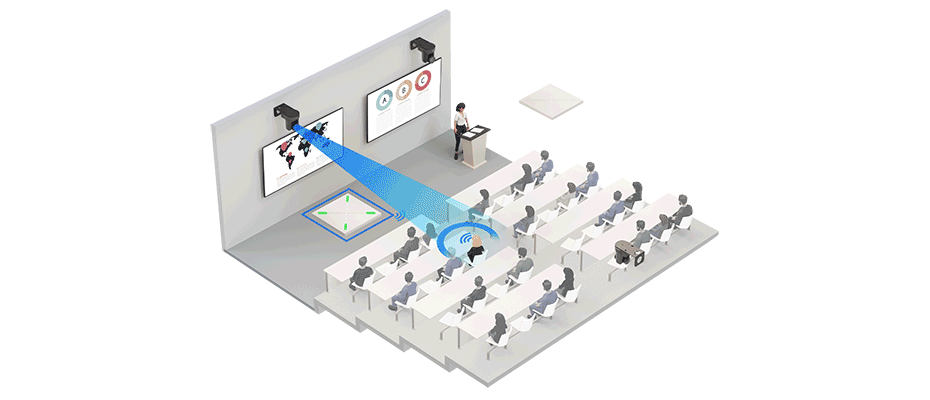
- Speaker Spotlight – Dynamically frames the person speaking, ideal for panel discussions and audience Q&A
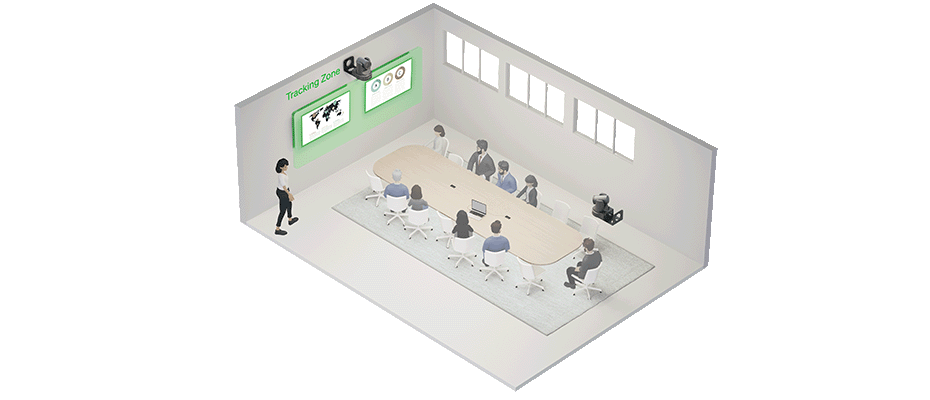
- Presenter Spotlight – Uses computer vision to track full-body movement, keeping presenters framed—even when turning or partially obstructed
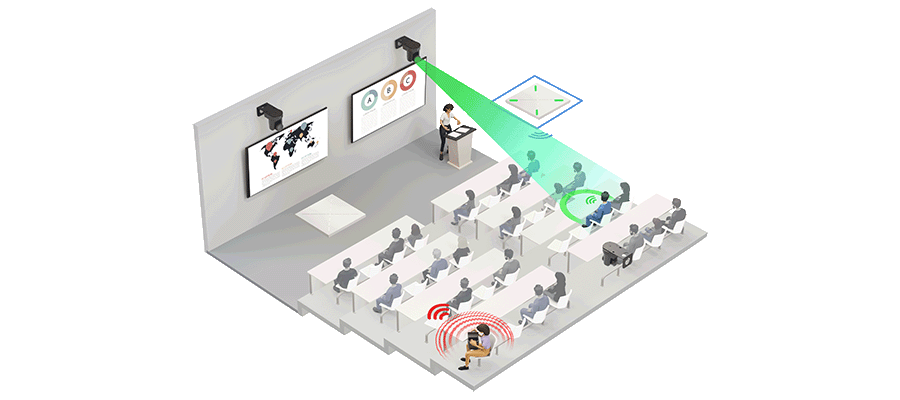
- Voice Activity Detection – Differentiates actual speech from ambient sound to reduce false triggers
Together, the VSA-100 and VisionSuite Designer enable smart automation that’s both powerful and approachable—reducing operator workload, streamlining design workflows, and ensuring every space delivers a reliable, immersive AV experience.
Cognitive Cloud: From Monitoring to Mission Control☁️
The Cognitive Cloud layer supports advanced capabilities for remote monitoring, cloud-based management, and system-wide insight. At the center of this is Q-SYS Reflect—and it’s evolving fast.
Q-SYS Reflect: More Than Monitoring
Q-SYS Reflect has long been recognized for its remote monitoring and management capabilities. However, it is quickly evolving as the beating heart of the platform’s evolution. As Q-SYS continues to expand its cloud-native roadmap, more features and functionality will move into Reflect, transforming it into a full-featured cloud control and analytics suite.
Reflect provides a unified interface for managing both Q-SYS and third-party devices. It supports real-time system health monitoring, remote setup and configuration, and centralized control—all at scale.
The new Data & Reports feature set provides powerful new ways to visualize and interact with this system data:
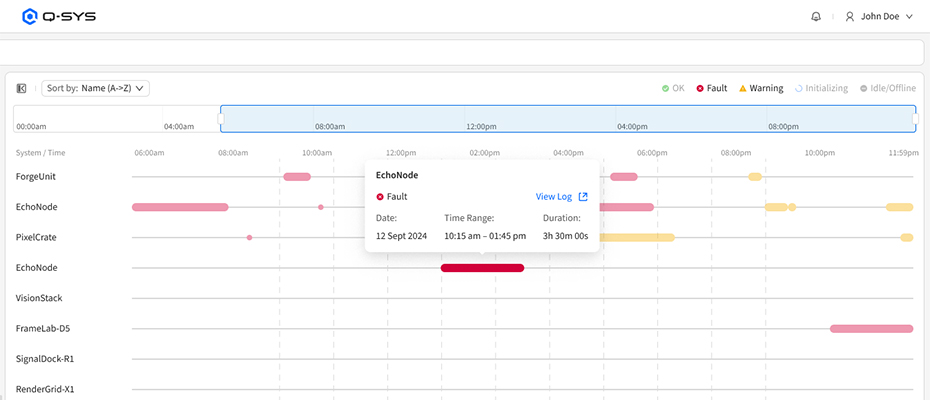
- System reliability dashboards with uptime, performance, and usage analytics
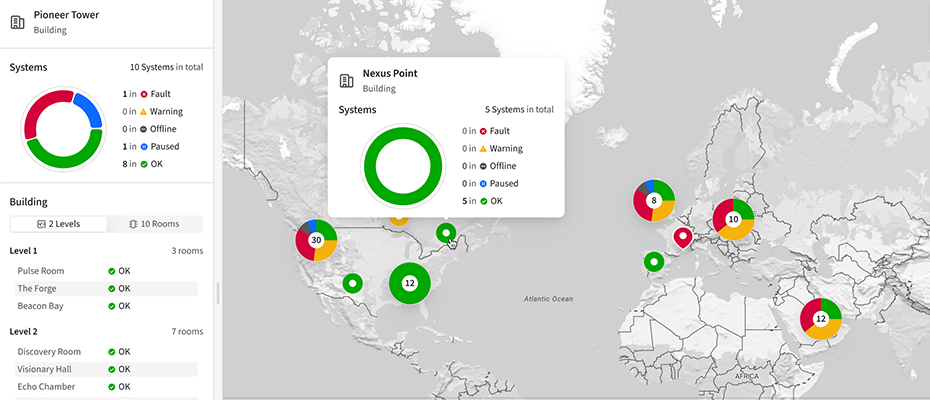
- Geo-spatial system views and hierarchical device organization
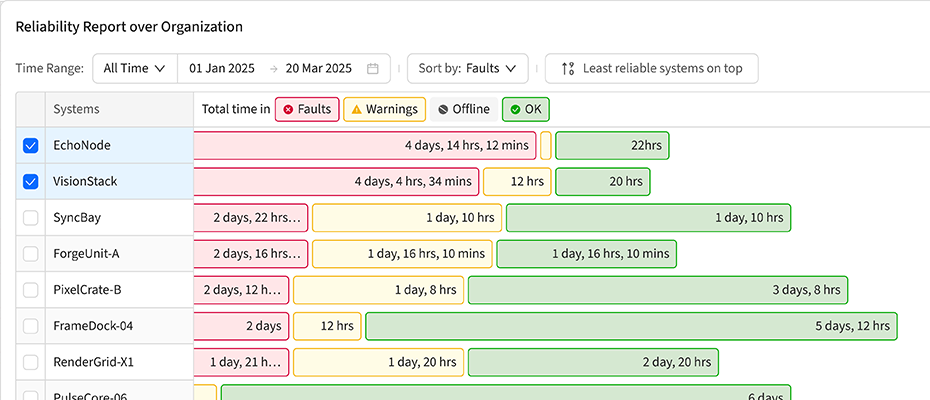
- Trend analysis to optimize performance and identify issues before they happen
Reflect also includes a free API, giving customers the ability to pull data into their preferred IT and analytics platforms, including CMMS, BI tools, and enterprise dashboards.
Behind the scenes, Reflect has been rebuilt on modern cloud infrastructure that paves the way for future capabilities—including AI-driven recommendations and deeper automation intelligence.
With new processing options, deeper automation tools, scalable licensing, and a more powerful cloud foundation, Q-SYS continues to lead the way in delivering intelligent, adaptable AV systems that work across industries and infrastructures.
For more information on the Q-SYS Full Stack AV Platform, visit www.qsys.com.
Patrick Heyn
Latest posts by Patrick Heyn (see all)
- Evolving the AV Experience: Unlocking the Power of the Q-SYS Full Stack AV Platform - May 15, 2025
- Q-SYS Work From Home Webinar Series - April 14, 2020
- Welcome to QSC! - January 16, 2020
